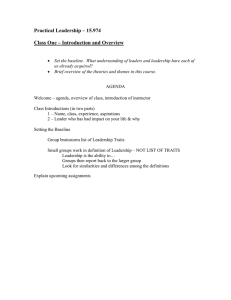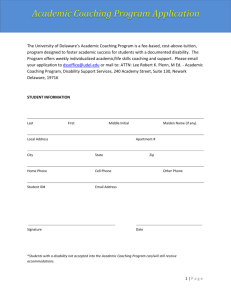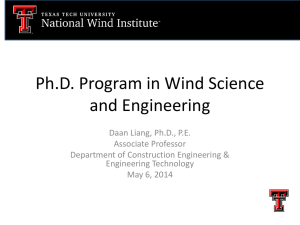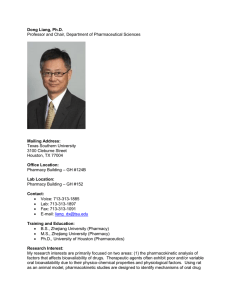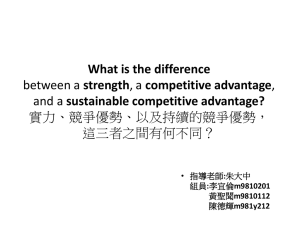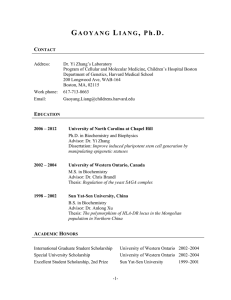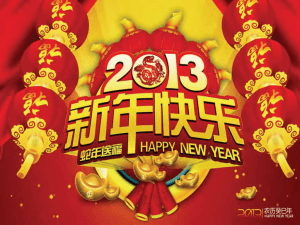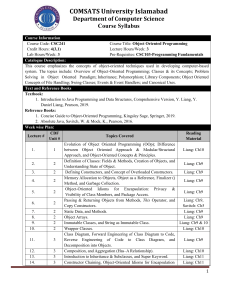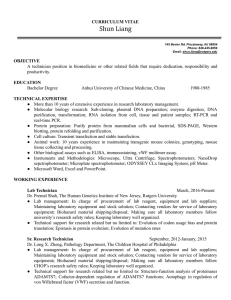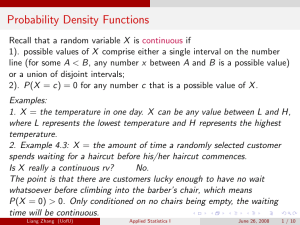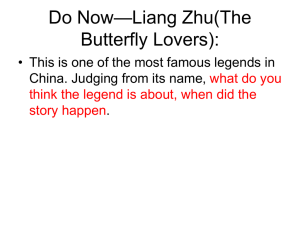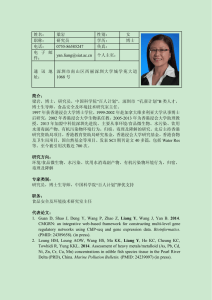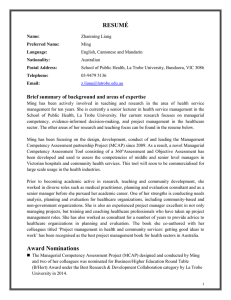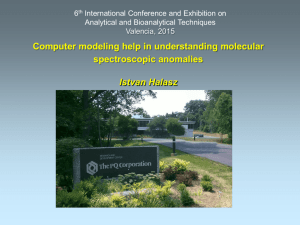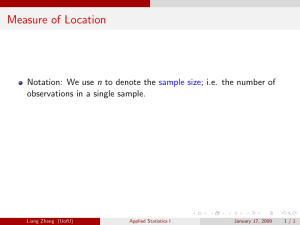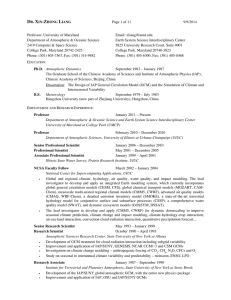Training & Development II
advertisement
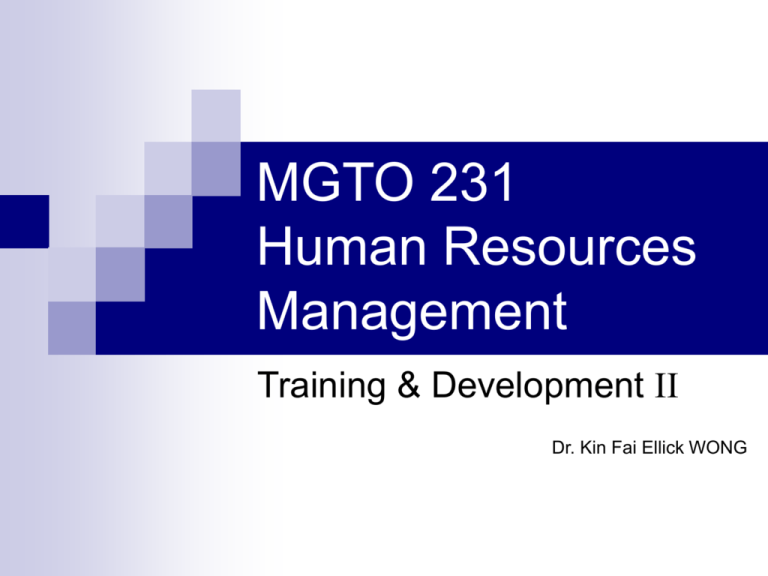
MGTO 231 Human Resources Management Training & Development II Dr. Kin Fai Ellick WONG Prologue You may imagine the importance of the continuity of the top-management from the death of Zhuge Liang (諸葛亮)… before his death, the emperor 劉禪 sent an ambassador 李福 to meet Liang In the meeting:… (from 三國演義,第一百零四回) Right 福謝曰:福天子命,問丞相百年後,誰可任大事 者… 孔明曰:吾死之後,何任大事者,蔣公琰其宣也。 福曰:公琰之後,誰可繼之? 孔明曰:費文偉可繼之。 福又問:文偉之後,誰當繼者? 孔明不答。眾將近前視之,已薨矣。 The kingdom maintained its power right after Liang’s death, but became much weaker after the death of 費 褘。 It is an illustration of a succession plan A process through which senior-level openings are planned for and eventually filled Without such a plan, the organization may not work once the leaders and the topmanagement leave… Outline Basic Concepts Needs assessment Assessment phase Direction phase Development phase What is career development? An on-going and formulized effort that focuses on developing enriched and more capable workers It is a long-term “investment” for the future needs of organizations It involves meeting employees’ and employers’ needs Training vs. development Development An effort to provide employees with the abilities the organization will need in the future Training Much more emphasis on skills for current needs Career development system Linking organizational needs with individual needs Organizational needs: the major strategic issues over the next few years Critical needs and challenges? Critical skills, knowledge, experience? Staffing level? Is the current strategy appropriate? Individual career needs: Getting career opportunities within an organization Using my strengths Addressing my development needs (needs of achievement and self-actualization) Matching my interests, values, and personal style The key issue in career development How can we develop a system through which both the organizational needs and individual needs can be achieved Are employees developing themselves in a way that links personal effectiveness and satisfaction with the achievement of the organization’s strategic objectives? The better the match, the more successful the development system Outline Basic Concepts Needs assessment Assessment phase Direction phase Development phase Very similar to the training process Three phases Assessment phase Direction phase Development phase The Career Development Process Assessment Phase Direction Phase Development Phase Source: Managing Human Resources, 4th Edition, p.305 Outline Basic Concepts Needs assessment Assessment phase Direction phase Development phase Assessment phase Goal: To identify employees’ strengths and weaknesses It helps employees to choose a career that is realistically obtainable and a good fit to determine the weaknesses they need to overcome in order to achieve their career goals Assessment tools Self-assessment vs. organizational assessment Tools for self-assessment Career workbooks Career planning workshops Three basic elements Skill assessment exercises Interest inventory To identify employee’s skills To measure a person’s occupational interests Values clarification Give priority to a list of values, e.g., money, family, power, etc. Tools for organizational assessment Assessment centers Situational exercises Have been widely used for selection, but also increasingly used for development assessment Psychological Personality and attitudes Performance testing appraisal Remember the future oriented nature of PA? Promotability forecasts Managers make decisions regarding the advancement potential of subordinates Succession planning Focusing on preparing people to fill executive positions It is necessary when the organization needs key positions without interruption Outline Basic Concepts Needs assessment Assessment phase Direction phase Development phase The direction phase Goals To determine the type of career that employees want To determine the steps they must take to realize their career goals Cannot be achieved well without a careful assessment of what is needed Must be integrated with other HRM functions, e.g., staffing, performance appraisal, and training Two approaches Individual career counseling vs. information services Individual career counseling One-on-one sessions To help employee examine their career aspirations Topics of discussion include: Job responsibilities, interests, and career objectives Could be done by HR staff, managers, or other professional counselors Information services To provide development information to employees No strict direction for employees Some common channels for giving information about development: Job-posting systems, skills inventories, career paths, and career resource centers Outline Basic Concepts Needs assessment Assessment phase Direction phase Development phase The development phase Taking actions to create and increase skills to prepare for future job opportunities Common development programs Mentoring Coaching Job rotation Tuition assistance Mentoring A developmentally oriented relationships between senior and junior colleagues or peers Seniors give advices, act as role models, share contacts, and give general support Coaching Ongoing meetings between managers and their employees to discuss the employee’s career goals and development Effective coaching Create a coaching context When employees demonstrate new skills or interests, seek feedback, expresses an interest in a change in the organization, have difficulty, and mention a desire of development opportunities Actively listen to the person Ask questions Give useful feedback Job rotation Assigning employees to various jobs They can acquire a wider base of skills Increase their flexibility to choose a career path Cross-functional training The debate between all-rounders 通才 vs. specialists 專才 Tuition assistance programs To support employees’ education and development For courses, seminars, continuing education programs, degree programs Debate In a flat organization, a career development approach that “broadens” employees’ skills (i.e., to be an allrounder, 通才) is more appropriate than that “deepens” their skills (i.e., to be an expert in a narrow dimension, 專才) ! Write down your arguments on the provided sheet. Try your best to approach this topic by focusing on what you have learnt from this course as well as other management courses





